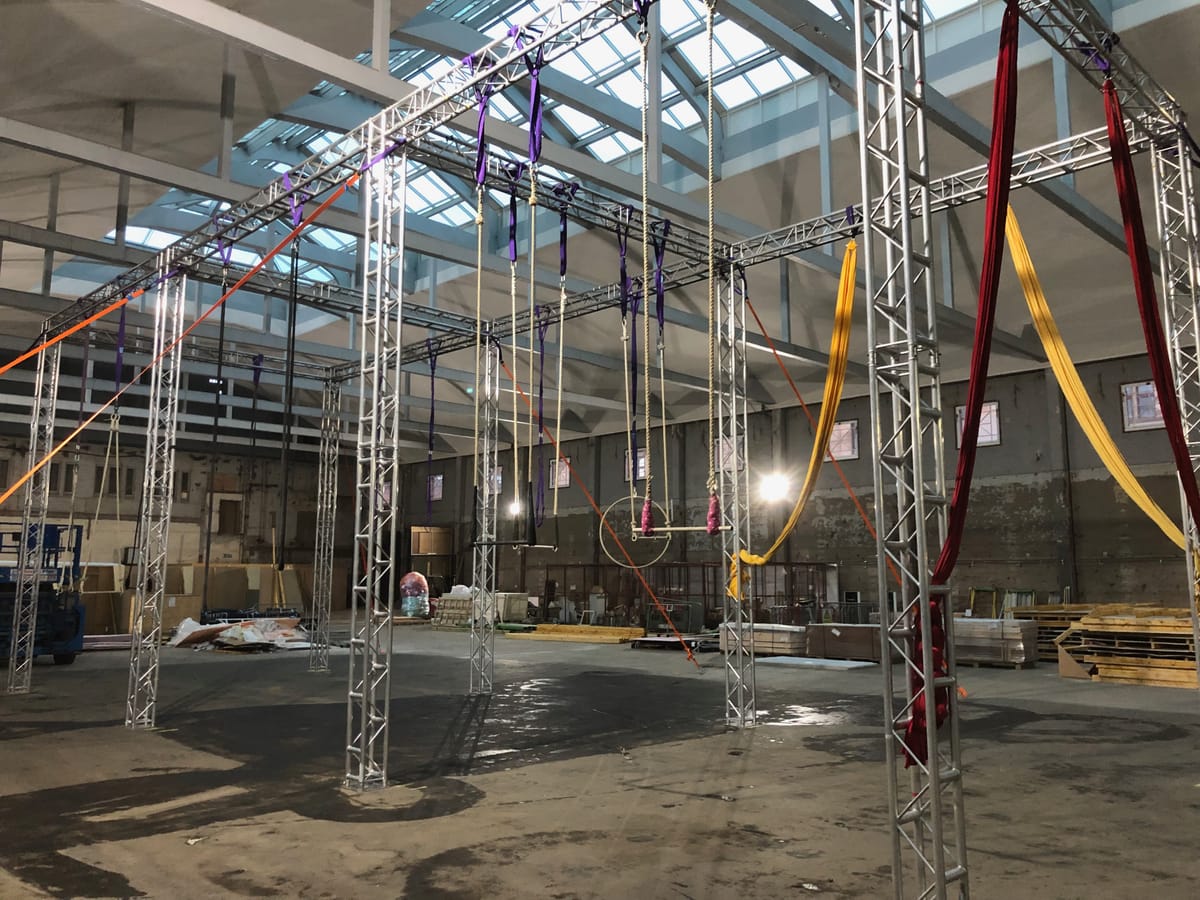Rigging course updates and using rigging harnesses on truss

The site has undergone quite a few updates over the last few weeks. We now have 9 lessons available for the Rigging for Circus Arts online course and 2 appendices.
- Lesson 1: An Introduction to Circus Rigging
- Lesson 2: Forces & Factors of Safety
- Lesson 3: Calculating Factors of Safety
- Lesson 4: Rigging From Truss
- Lesson 5: Setting Up Rigging Points at Home
- Lesson 6: Rigging Aerial Hoop
- Lesson 7: Rigging Silks & Hammocks
- Lesson 8: Risk Assessments
- Lesson 9: Equipment Inspections
- Appendix 1: Practical Rigging Case Studies
- Appendix 2: Rigging Training Courses
We've just released a massive article on harness use on box truss, which is available for paid members to review.

We would welcome any reviewers who are willing to send corrections and comments. All our articles are peer-reviewed to help ensure they are as correct as possible, and this will become part of the course.
Let me know if there are subjects you have a particular interest in that we haven't included so far. The next two on my list are counterweight rigging and pulley systems for the circus.
I've been renewing my PPE inspection credentials recently and decided to try out two different course providers; I'll aim to report on those courses in late September or early October.
What's the maximum force you should experience in a rigging harness?
When researching the article on harnesses and working at height on truss, I came across the figure of 6kN as the maximum force the rigger and the fall arrest system should experience. The question I had was, where in the standards did this appear? I had it from an IRATA manual. How did they agree on this number? I frequently fall down This type of rabbit hole when researching new articles.
It turns out the history of fall arrest systems is an interesting one. Research on this has been done with everything from volunteers to cadavers to animals to mannikins. It has brought in experience and force tests from everywhere, from parachuting to mining. However I'll keep it short and look at one specific source.
With the establishment of the European Community, now the European Union, the need to remove the barriers to trade that existed due to different national standards became apparent. The CEN, the European Committee for Standardization (Comité Européen de Normalisation) was set up and consisted of different working groups. The European standards we see today are ENs.
One pertinent example is EN 361 "Personal protective equipment against falls from a height — Full body harnesses"
Dr. Maurice Amphoux convened the working group on Fall Arrest Systems.
In 1982, Dr. Amphoux presented his research findings at a three-day meeting on PPE against falls from height in Paris, France. The paper was subsequently published in French under the title "Protection individuelle contre les chutes—Aspects physiopathologiques" in the collected papers of the meeting.
The research came to many conclusions that we still use today:
- A well-designed and tested full-body harness is essential, which will be supportive and stay in place
- A D-ring attachment point should be at the level of the thorax and in either the front or the back to ensure the body falls upright.
- Belt attachments should not be used for fall arrest to prevent transverse shear across the spine.
- Lanyards should be a maximum of 2 metres in length
- Suspension after a fall arrest can start to affect people in 15 minutes or less, and rescue must be provided as quickly as possible.
- To limit the mechanical force, it was necessary to add a shock absorber calibrated at 6,000 N
The data on forces experienced in parachuting showed us that around 12kN was an upper limit of the forces experienced:
We have therefore made a series of tests with a mannikin recording the maximum stresses at the anchoring point, which gives values around 12,000 N in the above mentioned conditions.
Similar measurements were, in fact, also carried out many times during parachute drops in order to estimate the level of stress that can be tolerated by the body and it was found that 12,000 N was an upper limit which was already extremely dangerous for a young, well-trained body, well prepared to face the shock of opening of a parachute by contracting his muscles to the maximum and thus keeping his body in a particularly favorable position.
Falls in an industrial setting are much more likely to have people who are less physically fit, less well trained, and likely to fall unprepared in less favourable positions than parachutists:
The workers who fall are neither especially young nor specially trained. Moreover, they can't foresee their falling and will be stopped in any position, without essential protection of general muscular contraction learned by parachutists. So we thought it reasonable to propose an upper limit for the acceptable maximum arrest force at 6 kN.
The original paper makes interesting reading, especially the part about internal organs breaking their "moorings".
Where can we find this in the standards? EN 355 "Personal protective equipment against falls from a height — Energy absorbers"
Thanks to all paid members for your support.


